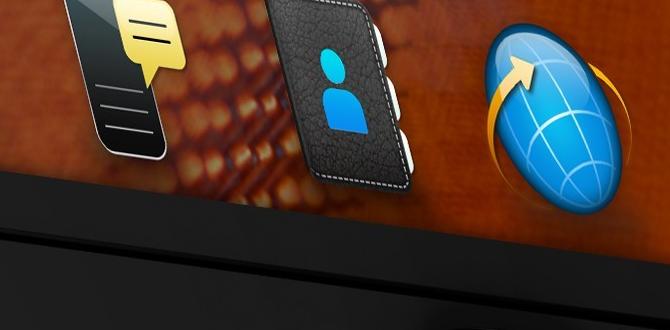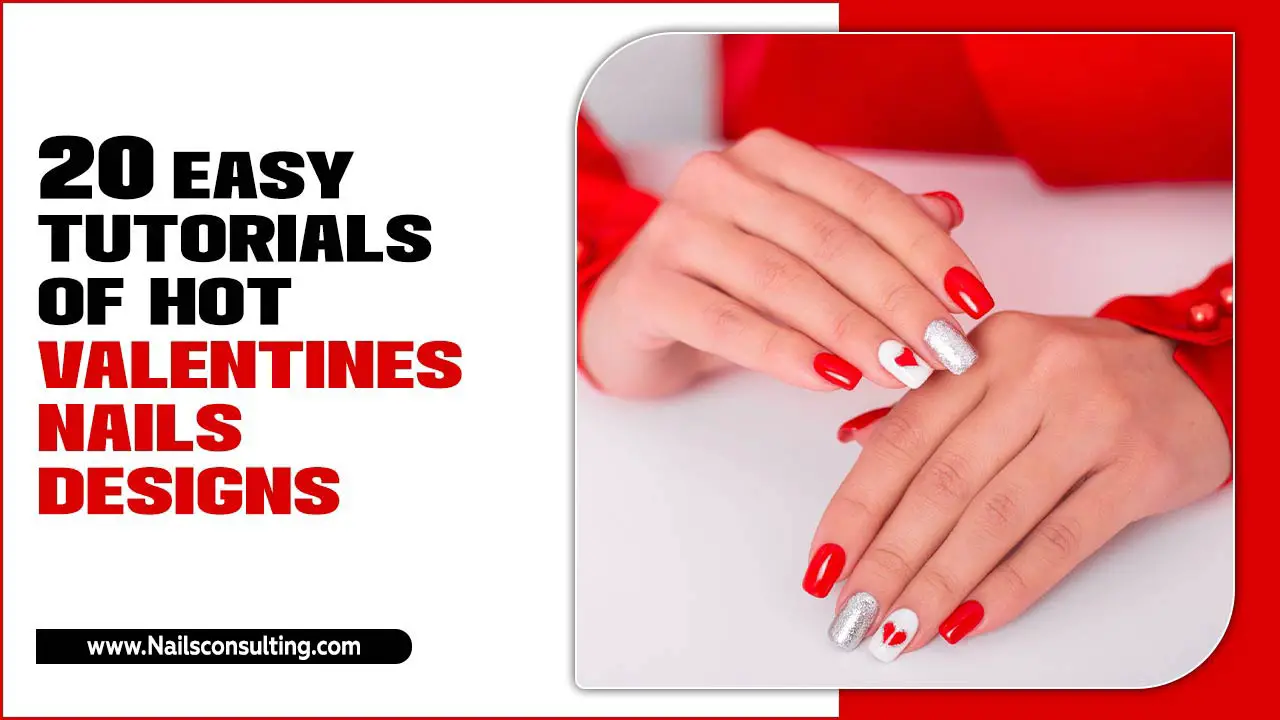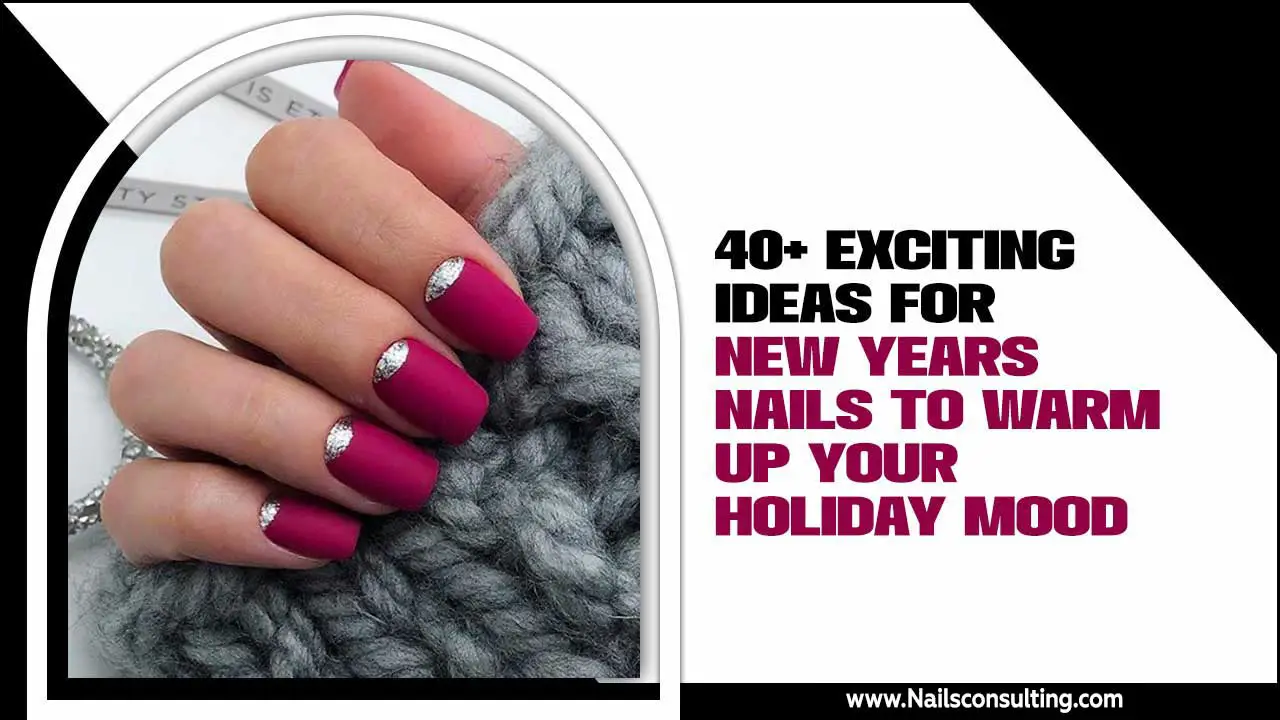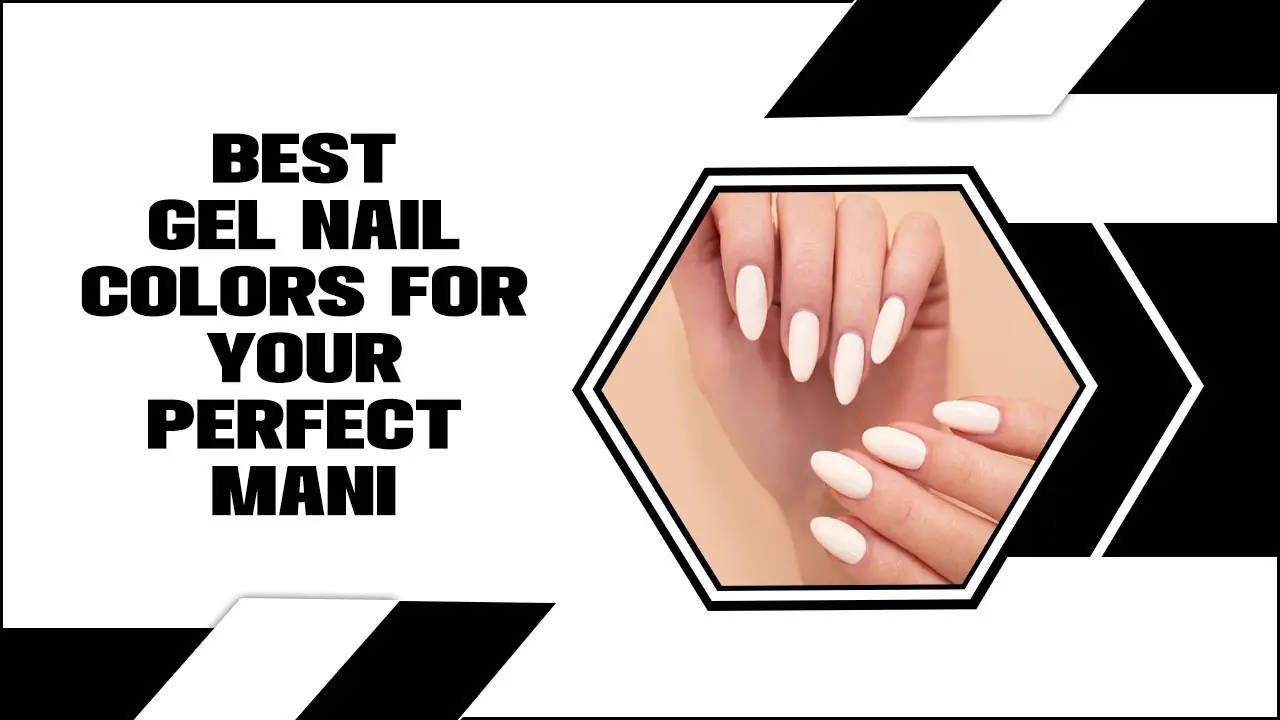Therapy nails are a gentle hair removal technique that uses soft wax to remove unwanted hair from the root, offering smoother skin for longer periods compared to shaving. They’re ideal for sensitive areas and provide a spa-like feeling of clean, refreshed skin. This guide will walk you through everything you need to know about this popular beauty treatment, from what it is to how to get the best results.
Hey there, fellow nail lovers! Lisa Drew here, your go-to gal for all things nails and beauty. Ever look at those perfectly smooth skin results after a salon visit and wonder how they do it? Today, we’re diving into a topic that’s super popular and can leave your skin feeling incredibly soft and refreshed: therapy nails, also often referred to by names like waxing or hair removal services. It’s a way to gently remove unwanted hair, and if you’ve been curious about it, you’re in the right place! We’ll break down what it is, why it’s loved, and how you can achieve those amazing smooth-skin results yourself or with a pro. Get ready to feel pampered and confident!
What Exactly Are “Therapy Nails”?
When we talk about “therapy nails” in the context of beauty and hair removal, we’re actually referring to a specific method of hair removal, most commonly waxing. Think of it less like nail art and more like a spa treatment for your skin that leaves it feeling as smooth and cared for as a perfect manicure! It’s a process where a specialized wax is applied to the skin and then removed quickly, pulling hair from the root. This leaves your skin smooth for weeks, unlike shaving which only cuts hair at the surface. It’s a favorite for areas like legs, arms, eyebrows, and the bikini line, offering smoother results and slower regrowth. We’ll explore all the ins and outs, so you can feel totally in the know.
Why Are We Talking About “Therapy Nails”?
This term might sound a little new, especially if you’re used to hearing “waxing” or “hair removal.” But “therapy nails” is emerging as a way to describe the result and the experience of effective hair removal. It’s about achieving that smooth, clean, almost spa-treated feeling for your skin that complements your overall polished look, much like a great set of nails does for your hands. Many people turn to this method because it offers longer-lasting smoothness than shaving, reduces the appearance of stubble, and can even lead to finer hair regrowth over time. Plus, the feeling of incredibly soft skin can be a real confidence booster!
The Magic Behind Therapy Nails: How It Works
At its heart, therapy nails is a form of epilation, meaning hair removal from the root. The most common technique involves warm wax. Here’s a simple breakdown of the process:
Preparation is Key: The skin is cleansed to remove oils and any residue. Sometimes a light powder is applied to help the wax adhere better to the hair, not the skin.
Wax Application: Warm wax is spread over the area in the direction of hair growth. It’s applied in a thin layer.
The Removal: A strip of cloth or paper (depending on the type of wax) is pressed firmly onto the wax. Then, in a swift motion, the strip is pulled off against the direction of hair growth. This lifts the hair from the follicle.
Post-Treatment Care: Any leftover wax residue is removed, and a soothing lotion or oil is applied to calm the skin and prevent irritation.
This method tackles the hair from its source, which is why the results last so much longer than surface hair removal.
Different Types of Waxing for Your Therapy Nails Experience
Not all waxes are created equal, and knowing the different types can help you (or your esthetician) choose the best option for your skin and the area being treated.
Hard Wax vs. Soft Wax
This is the most common distinction you’ll encounter.
Hard Wax:
What it is: This wax doesn’t use strips. It’s applied thickly and hardens on its own, allowing the esthetician to lift it off with their fingers.
Best for: Smaller, more delicate areas where skin is sensitive, like the face (eyebrows, upper lip) and bikini area. It’s great for grabbing coarser hair.
Pros: Less painful for sensitive areas, adheres to hair more than skin, no strips needed.
Cons: Can take longer for larger areas, requires a bit more skill to apply and remove effectively.
Soft Wax:
What it is: This wax is applied in a thin layer and then removed with a cloth or paper strip.
Best for: Larger areas like legs, arms, and back. It’s efficient for removing fine to medium hair.
Pros: Quick for large areas, cost-effective.
Cons: Can be more irritating to sensitive skin as it adheres to the skin as well as the hair, requires strips for removal, may cause more redness.
Other Waxing Methods You Might Hear About:
Sugaring: While technically different from waxing (it uses a sugar paste), it’s often grouped with waxing services for hair removal. It’s known for being gentler and made with natural ingredients.
At-Home Wax Kits: These come in various forms, from strip-less wax beads to pre-made wax strips. They offer convenience but require careful application to avoid mistakes.
Are Therapy Nails Right for You? Pros and Cons
Like any beauty treatment, there are benefits and considerations to “therapy nails” (waxing).
The Perks of Smooth Skin:
Long-Lasting Smoothness: Hair is removed from the root, so regrowth takes longer. You can enjoy smooth skin for up to 3-6 weeks.
Finer Regrowth: Over time, with consistent waxing, hair may grow back finer, softer, and sparser.
Exfoliation: The process of waxing removes dead skin cells along with the hair, leaving your skin smoother and brighter.
Reduced Ingrown Hairs (with proper care): While ingrown hairs can happen, many find that regular waxing, especially with proper exfoliation, leads to fewer ingrowns than other methods.
No Stubble: Unlike shaving where you can feel stubble appear within a day or two, waxing leads to a smoother transition as hair grows back.
Convenience: Once you get into a waxing routine, you don’t have to think about hair removal as often.
Things to Consider Before Trying Therapy Nails:
Temporary Discomfort: Yes, it can be a little painful, especially the first few times or in sensitive areas. The sensation is brief!
Potential for Irritation: Redness, bumps, and minor irritation are common immediately after waxing. This usually subsides quickly.
Cost: Professional waxing treatments can be more expensive than at-home shaving.
Hair Growth Requirement: For waxing to be effective, hair needs to be a certain length (about 1/4 inch, or the length of a grain of rice). This means you might need to let your hair grow out for a bit between sessions.
Not for Everyone: If you’re using certain medications like Accutane or topical retinoids, have very sensitive skin conditions, or have skin that’s sunburned or has cuts, waxing might not be suitable. Always consult with a dermatologist or your esthetician.
Preparing for Your Therapy Nails Session
Getting ready for a waxing appointment at a salon or attempting it at home is crucial for the best results and minimizing discomfort.
Before Your Salon Appointment:
1. Let Your Hair Grow: Ensure your hair is at least 1/4 inch long. This is usually about two weeks of growth after shaving.
2. Exfoliate (Gently): A day or two before your appointment, gently exfoliate the area you’ll be waxing. This helps lift hairs and prevents ingrowns. Avoid exfoliating the same day of your appointment to prevent irritation.
3. Avoid Sun Exposure: Don’t get a tan or spend a lot of time in the sun on the treated area for at least 24-48 hours before your appointment.
4. Shower Beforehand: Come to your appointment with clean skin, free of lotions, oils, or deodorants. This helps the wax adhere better.
5. Wear Loose Clothing: Opt for comfortable, loose-fitting clothing to wear to and from your appointment to avoid rubbing and irritation on the freshly waxed skin.
6. Manage Pain (Optional): For super sensitive areas, some people take an over-the-counter pain reliever like ibuprofen about 30-60 minutes before their appointment.
Preparing for At-Home Waxing:
If you’re waxing at home, the prep is similar, but you’ll also need to ensure you have the right tools and a clean, well-lit space. Read the instructions on your wax kit carefully before you begin.
The Step-by-Step Guide to Achieving Therapy Nails at Home
Ready to try waxing yourself? It takes a bit of practice, but with the right tools and careful steps, you can achieve smooth results. This guide focuses on using a popular at-home method: strip wax.
Tools You’ll Need:
Wax Kit: Choose a kit with wax (hard or strip, depending on your preference and area), applicators, and strips.
Pre-Wax Cleanser: To clean the skin.
Powder (optional): To help absorb moisture.
Soothing Post-Wax Lotion/Oil: To calm the skin.
Tweezers: For any stray hairs.
Mirror: A hand-held mirror can be helpful for hard-to-see areas.
Clean Towels/Paper Towels: For cleanup.
The Process:
1. Cleanse the Area: Wash the skin thoroughly with your pre-wax cleanser or mild soap and water. Pat the area completely dry. Apply a light dusting of powder if needed, especially if you have oily skin.
2. Heat the Wax: Follow your wax kit’s instructions carefully for heating the wax. It should be warm and spreadable, not hot. Test a small amount on your inner wrist first.
3. Apply the Wax:
Using an applicator, spread a thin, even layer of wax onto the skin in the direction of hair growth. Work in small sections.
For strip wax, apply in the direction of hair growth.
4. Place the Strip:
For strip wax, press a cloth or paper strip firmly onto the waxed area, smoothing it down over the wax. Leave a small edge of the strip free to grip.
5. The Removal (The Quick Part!):
Hold the skin taut with one hand.
With your other hand, grip the edge of the strip.
In one swift, decisive motion, pull the strip off against the direction of hair growth. Keep the pull parallel to the skin, not upwards. It sounds quick, but it’s a fast, firm pull!
6. Soothe and Clean:
Press down on the waxed area immediately after pulling to help calm the nerve endings.
Use your post-wax cleanser or a gentle oil (like baby oil or olive oil) to remove any residual wax.
Apply a soothing lotion or a calming serum designed for post-waxing. Avoid fragranced products initially.
7. Tweeze Any Missed Hairs: Use clean tweezers to remove any individual hairs the wax may have missed.
8. Aftercare is Crucial: For the next 24-48 hours, avoid hot showers or baths, saunas, steam rooms, tanning beds, strenuous exercise, and tight clothing. Keep the area clean and moisturized.
For a visual guide, many reputable beauty sites offer video tutorials on at-home waxing techniques. A great resource to check out for general skincare advice and best practices is the American Academy of Dermatology Association (AAD), which provides insights into various hair removal methods and skin safety.
Aftercare: Keeping Your Skin Smooth and Happy
Proper aftercare is just as important as the waxing itself for achieving and maintaining those “therapy nails” smooth results and preventing issues like ingrown hairs.
Immediately After Waxing (First 24-48 Hours):
Avoid Heat: Steer clear of hot baths, saunas, steam rooms, and hot tubs. Stick to lukewarm showers.
No Sun: Protect the waxed area from direct sunlight. Tanning beds are also a no-go.
Go Loose: Wear loose-fitting clothing to prevent friction and irritation.
Skip the Gym: Intense workouts can cause sweating, which can irritate freshly waxed skin.
Avoid Fragrance: Skip scented lotions, deodorants, or perfumes on the treated area.
Long-Term Care for Lasting Smoothness:
Exfoliate Regularly: Start exfoliating the treated areas 2-3 days after waxing and continue 2-3 times a week. Use a gentle sugar scrub, a loofah, or an exfoliating mitt. This is KEY to preventing ingrown hairs and keeping skin smooth.
Moisturize Daily: Keep your skin hydrated with a gentle, fragrance-free moisturizer to maintain its suppleness and health.
Stay Consistent: For the best results and to ensure future waxing sessions are easier, try to maintain a regular waxing schedule. Your hair will become finer and more sparse over time.
FAQ: Your Therapy Nails Questions Answered
Here are some common questions people have about “therapy nails” and waxing.
Q1: How long does the smoothness from therapy nails last?
A1: The smoothness typically lasts between 3 to 6 weeks, depending on your hair growth cycle and the area treated. Regrowth will be finer and sparser with consistent sessions.
Q2: Is waxing more painful than shaving?
A2: Waxing involves removing hair from the root, so it can be more uncomfortable than shaving, which just cuts the hair at the surface. However, the pain is usually brief, and many find it worth it for the longer-lasting smoothness. For sensitive areas, hard wax is often less painful.
Q3: What should I do if I get ingrown hairs after waxing?
A3: The best prevention is regular gentle exfoliation starting a few days after waxing. If you do get an ingrown hair, avoid picking at it. Continue to exfoliate the area gently, and it should resolve on its own. If it looks infected, consult a doctor or dermatologist.
Q4: Can I do therapy nails on my face, like my eyebrows?
A4: Yes, but it’s highly recommended to have facial waxing done by a professional esthetician. The skin on the face is very delicate, and professional techniques ensure safety and the best cosmetic results. Hard wax is typically used for facial areas.
Q5: Are there any natural alternatives to traditional waxing?
A5: Sugaring is a popular natural alternative. It uses a paste made from sugar, lemon, and water and is applied against hair growth and removed in the direction of hair growth, which can be gentler for some individuals.
Q6: How often should I get waxed for therapy nails?
A6: For most people, returning for waxing every 4-6 weeks is ideal. This allows enough hair growth for the wax to grip effectively while still maintaining smoothness.
Q7: Can I wax if I have sensitive skin?
A7: Yes, you can! It’s best to use hard wax, which adheres less to the skin than soft wax, and to opt for formulas designed for sensitive skin. Always perform a patch test beforehand and inform your esthetician about your sensitivity.
Keeping It Smooth: A Word on Best Practices and Tools
Achieving those “therapy nails” smooth results consistently relies on a combination of technique and the right supplies. Whether you’re a DIY pro or a salon regular, understanding the nuances can make a big difference.
Essential Tools for At-Home Waxing:
When you decide to tackle waxing at home, having the right tools makes the process safer and more effective. Here’s a quick rundown:
Wax Warmer: A dedicated warmer ensures wax is at the perfect temperature. Unevenly heated wax can burn or fail to grab hair.
Quality Wax: Invest in good quality wax. For sensitive areas or beginners, hard wax beads are often recommended as they are less sticky and adhere more to the hair than the skin. For larger areas, soft wax with good quality strips is efficient.
Applicators: Wooden or plastic spatulas are essential. Ensure you have enough, and never double-dip into the wax pot if you’re using a hard wax warmer to maintain hygiene.
Pre- and Post-Wax Care Products: Don’t skip these! A good cleanser removes oils for better wax adhesion, and a calming lotion soothes the skin and helps prevent irritation and ingrown hairs. Look for ingredients like aloe vera, chamomile, or azulene.
Tweezers: For those stray hairs that the wax might miss. Ensure they are sharp and clean.
Salon vs. DIY: Which is Best?
| Feature | Professional Salon Waxing | At-Home Waxing |
| :—————- | :——————————————————– | :——————————————————– |
| Expertise | Trained estheticians know techniques for best results and safety. | Requires practice and learning proper application and removal. |
| Pain Level





